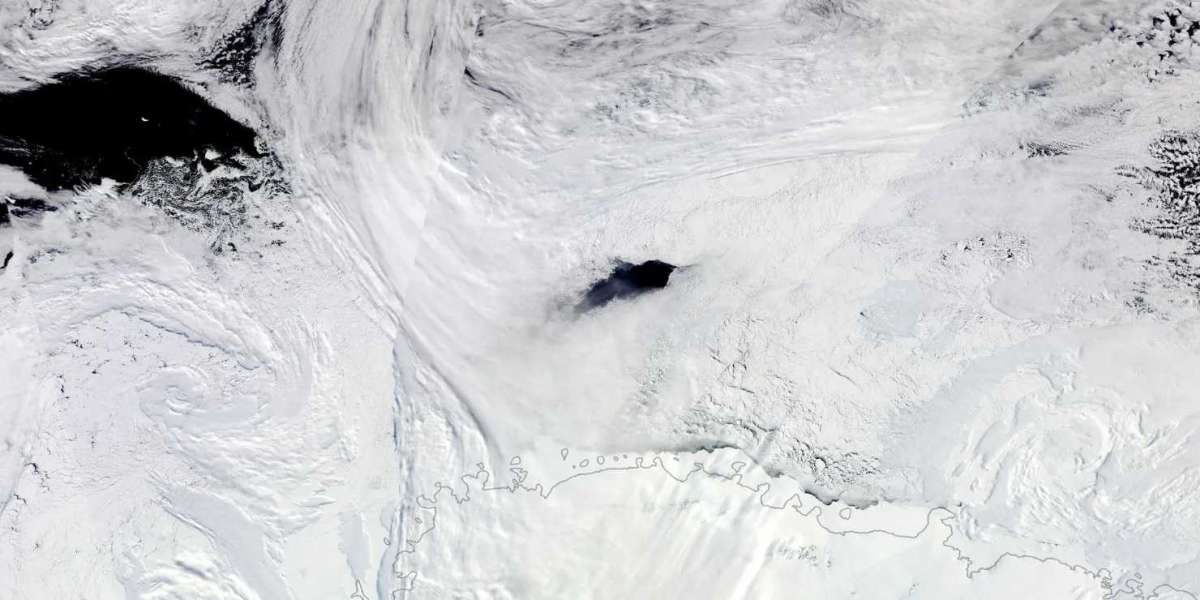Scientists have recently uncovered the mystery behind the hole in the sea ice around Antarctica, which is almost twice the size of Wales and occurred during the winter of 2016 and 2017.
A study published Wednesday (1/5) in Science Advances reveals a key process that was unknown to scientists, namely how holes called polynyas can form and persist for several weeks.
A team of researchers from the University of Southampton, University of Gothenburg, and University of California San Diego studied the Maud Rise polynya. The name is given to the mountain-like feature submerged in the Weddell Sea, where this polynya occurs.
The researchers found the polynya was caused by a complex interaction between winds, ocean currents and the unique geography of the seabed, which transports heat and salt to the surface.
In Antarctica, the surface of the ocean freezes in winter, with sea ice covering an area twice the size of the continental United States.
In coastal areas, openings in sea ice occur every year. Here, strong coastal winds blow over the continent and push the ice away, exposing the ocean water beneath.
Polynyas form much less frequently on sea ice in the open ocean hundreds of kilometers away from the coast, where the sea is thousands of meters deep.
"The Maud Rise Polynya was discovered in the 1970s when a remote sensing satellite that could see sea ice in the Southern Ocean was first launched," said Aditya Narayanan, a postdoctoral researcher at the University of Southampton, who led this research, quoted from Eurekalert.
This polynya persisted for consecutive winters from 1974 to 1976 and oceanographers at the time assumed it was an annual occurrence. "However, since the 1970s, this has only happened sporadically and for a short time," he continued.
Fabien Roquet, a Professor of Physical Oceanography at the University of Gothenburg and one of the authors of this study, explained that there are processes that occur so that the polynya can survive. According to him, there must be additional salt input from somewhere.
The researchers used remotely sensed sea ice maps, observations from autonomous buoys and tagged marine mammals, and computational models of the state of the ocean.
As a result, they found that when the Weddell Sea current flows around Maud Rise, turbulent eddies move salt to the top of the seamount.
From here, a process called 'Ekman transfer' helped move the salt to the north side of the Maud Rise, where the polynya first formed.
https://progoentertainment.blogspot.com/2024/05/film-review-fall-guy-2024.html
https://groups.google.com/g/onenews-daily/c/r7ezs1m9zrM
https://sites.google.com/view/onewsdailyscientists/
https://sway.cloud.microsoft/pOoPTwrsmnTyMb1v
https://sway.cloud.microsoft/pOoPTwrsmnTyMb1v?ref=Link
https://hackmd.io/@irwan100/HkS_9oK-T
https://telegra.ph/Scientists-Reveal-the-Mystery-of-the-Giant-Hole-in-Antarctica-05-07
https://www.zupyak.com/p/4155869/t/scientists-reveal-the-mystery-of-the-giant-hole-in-antarctica
Ekman displacement involves water moving at a 90 degree angle to the direction of the wind blowing over it, affecting ocean currents.
"Ekman transport is an important missing element that is needed to improve the salt balance and maintain the mixing of salt and heat to the water surface," said Alberto Naveira Garabato, a researcher from the University of Southampton who was involved in the study.
The polynya itself is an area where large amounts of heat and carbon are transferred between the ocean and the atmosphere. So big that it can affect heat and carbon conditions in the region.
Polynya traces are said to survive in water for several years after they are formed. They can change how water moves and how currents carry heat toward continents.
The high-density waters that form here can spread throughout the global ocean.
Some of the same processes involved in the formation of the Maud Rise polynya, such as the uplift of deep, salty ocean water, are also driving a general reduction in sea ice in the Southern Ocean.








